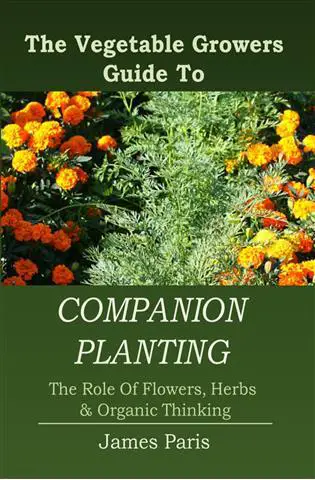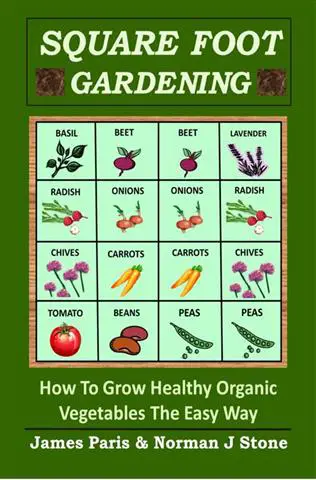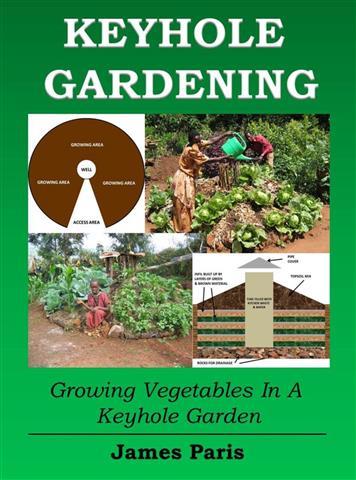This is perhaps one of the easiest ways to grow potatoes. It requires no ‘green fingers’, very little in the way of topsoil, and offers the gardener a good harvest of clean healthy potatoes with very little effort.
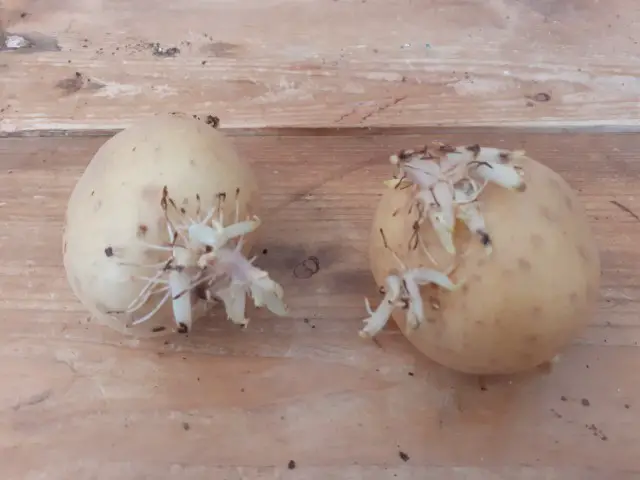
Potato planters come in many shapes and sizes, with the potato sack perhaps the most popular amongst the range of containers used for growing potatoes.
The humble cardboard box is often overlooked when the potato planter is being chosen. The main reason for this is perhaps that it is not the most obvious method for growing potatoes – or any other vegetables for that matter.
The fact remains however that it can be an effective and interesting way to grow your garden spuds – and the kids will love it!
How to plant your potatoes in cardboard boxes
- Firstly find yourself a cardboard box of a suitable size. You will need a minimum 10 inches high for best results, ranging to about a 2 foot high maximum (or else it will collapse due to the internal pressures). Outside dimensions can be whatever you choose depending on how many potatoes you want to grow.
- Once you have your box, then choose an area to place it. This is better on garden soil or compost, even on a concrete slab if that’s all you have (soil’s better though).
- Open up the box on both ends and fold back the cardboard on the base outwards before placing it in position. On the top of the box fold the labels inwards. This will strengthen the lip of the box. Be aware you will not be able to change location once you have finished this process as the base is missing!
- Pin down the box by adding weights to the open slats on the base. This will prevent it all blowing away before the operation is complete.
- Loosen the soil at the ground level, then place the previously chitted potatoes in the soil with the eyes or shoots pointing upwards and just a covering of soil.
- As the shoots begin to sprout upwards cover them over progressively with a layer of mulch (straw, dry grass, leaf moult or even shredded paper will do).
- Continue the process until the potato shoots reach the surface or top lip of the box.
- Harvesting: By harvest time the box will have deteriorated so it’s a simple matter to tear away the box and reveal your harvest.
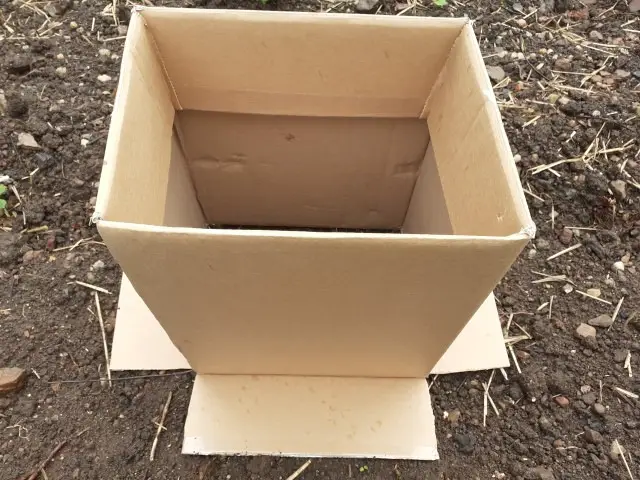
Alternatively, if you have no soil and plan to grow the potatoes on top of concrete slab, then just add a few more inches of soil to the base (this provides the nutrients) and fill with mulch as described above.
You can also choose to just fill the box with topsoil, however be aware that the extra weight may just collapse you box sooner than intended especially as it gets wet and degrades.
To explain a little further about the progressive build-up of the materials. The tubers themselves grow from the sprouting shoot of the potato, this means that as the shoot grows you continue to cover it up which will encourage it to grow ever upwards. The longer the shoot or stalk, the more potatoes. This is the basic principle behind a potato barrel or sack.
How many potatoes should be planted per box? As a rough planning guide only 1 potato per square foot of growing area is normal practice.
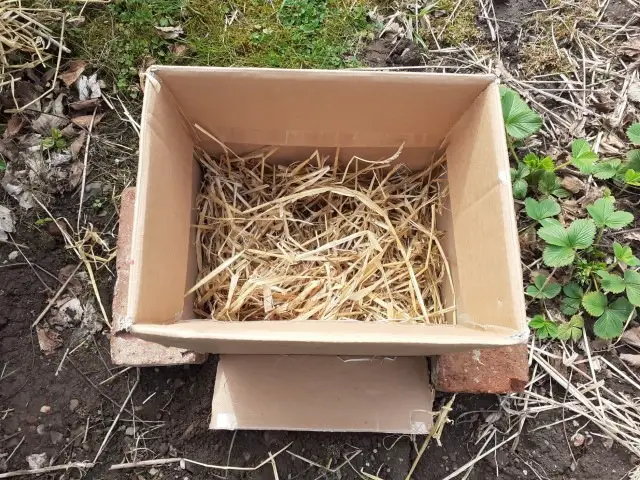
Benefits of growing potatoes in cardboard boxes
There are many benefits to growing spuds in cardboard boxes such as the following…
- Boxes are free: Most of us have access to cardboard boxes for free thanks to Amazon and home deliveries!
- Good for the environment: Using cardboard boxes in this way not only saves them from the landfill, but also adds material to your compost heap at the end.
- Easy progress check: It’s easy (and exciting) to check the progress of your potatoes simply by lifting away some of the mulch and replacing it again.
- Clean potatoes: Since the potatoes are growing up through mulch, you do not have a load of sticky soil to remove from the tubers when they are ready to harvest.
- Great introduction for kids: Growing potatoes in this way is the perfect introduction to vegetable gardening for kids who seem to find the whole process fascinating.
Choosing a cardboard box as a potato planter
There are of course many types of cardboard boxes you could choose when it comes to making a planter, however not all are suitable for a number of reasons.
When choosing a box try and remove any sticky labels or heavy staples (unless the box falls apart when you do so!). heavy staples are not good when it comes to composting the box at the end so just make sure you remove them before composting the box.
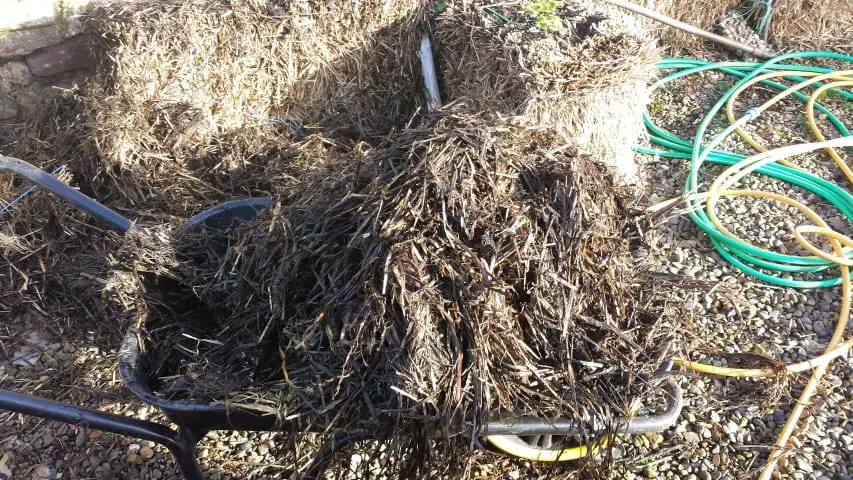
Do not choose shiny coloured boxes or anything covered with shiny paper. This is not good for compost. Choose a plain brown cardboard box.
Sturdiness. Pick a good strong box if you can, or one that has cardboard thickness of at least 5/32 inch (4.0 mm). Double layer cardboard has 3 sheets of card with 2 sheets of corrugated card between them.
This is a common strong type box often used by delivery companies. Triple layer cardboard is about the strongest domestic cardboard box.
Conclusion:
Growing potatoes in cardboard boxes can be great fun and very productive as potatoes are just so easy to grow!
Even if you choose a flimsy box that falls apart before the harvest is ripe, it is not the end of the world, especially if you have placed the box on garden soil. And the spuds are almost always ready to harvest before that happens.
It also makes a great game or contest for the kids – just pick a box for each child and let them care for them throughout the growing season. At the end of the season the winner is the child with most spuds, or the best combined weight, or the biggest potato!
The choices for competition are endless – especially if you grow several different types of potato and score accordingly.
Now, I’m off to plant my second early Jazzy potatoes in a cardboard box!

